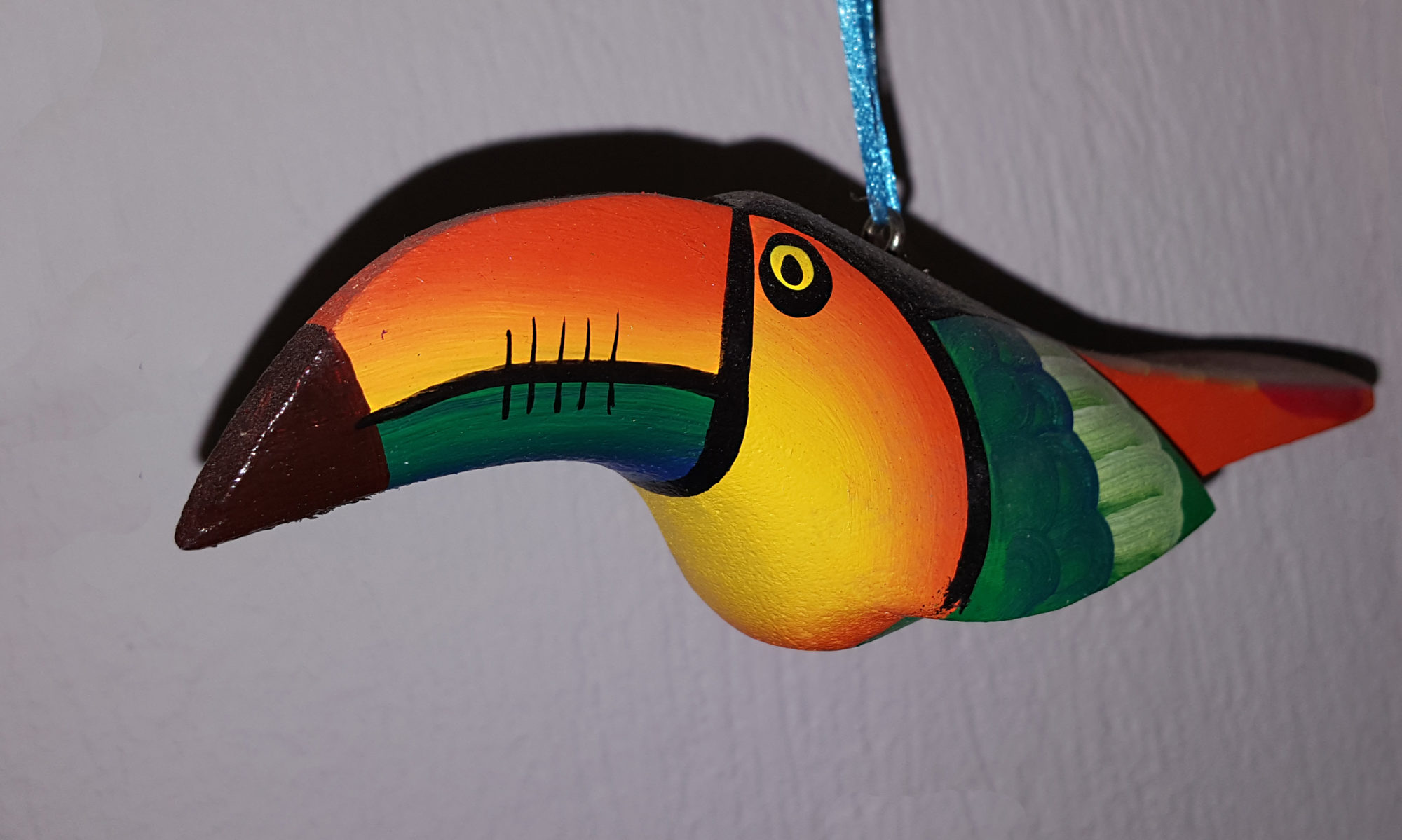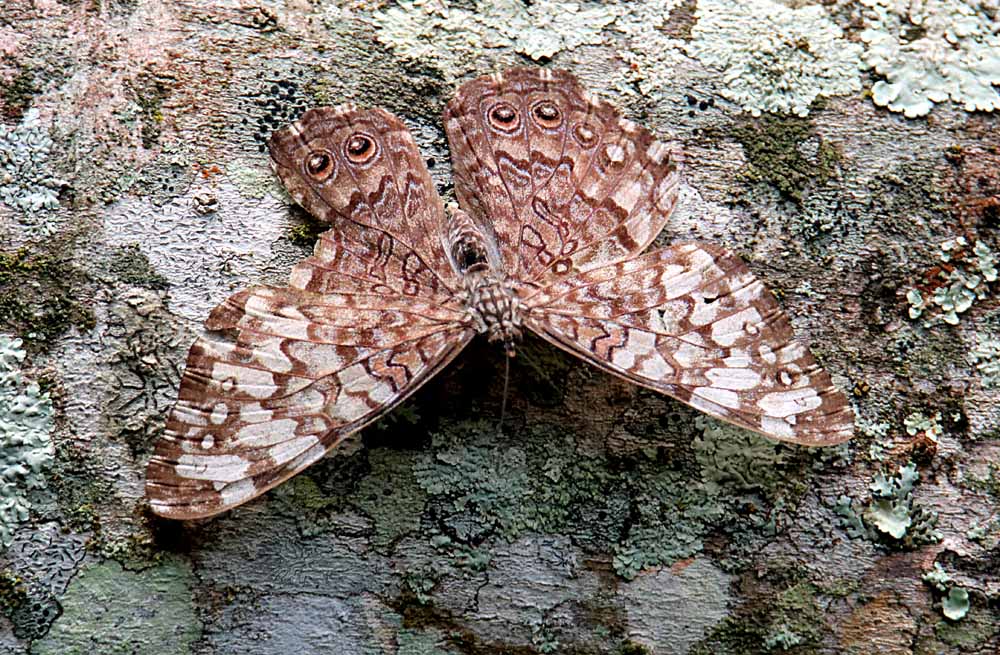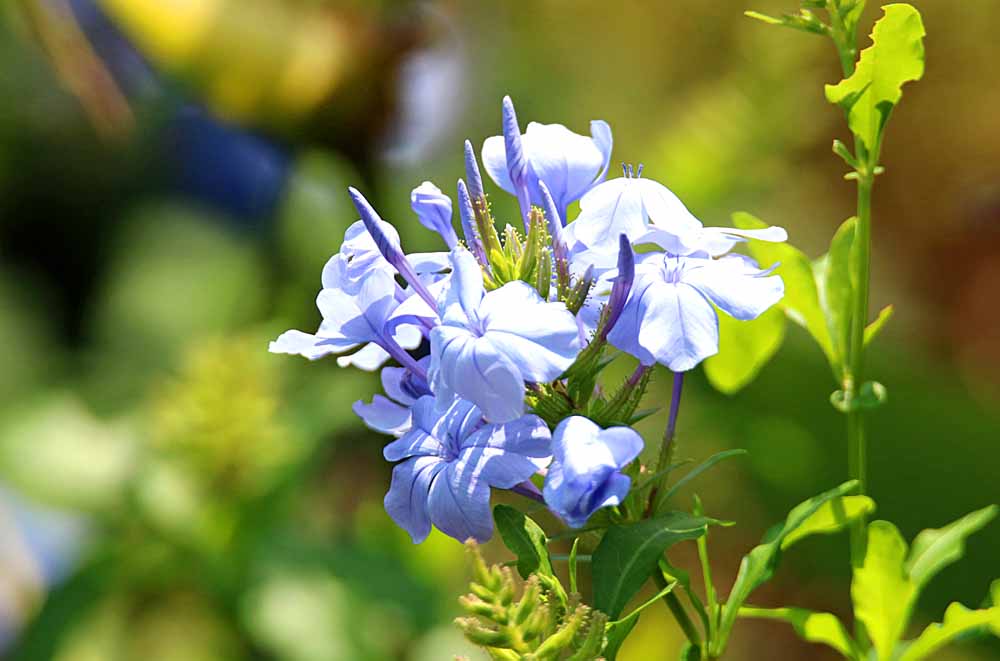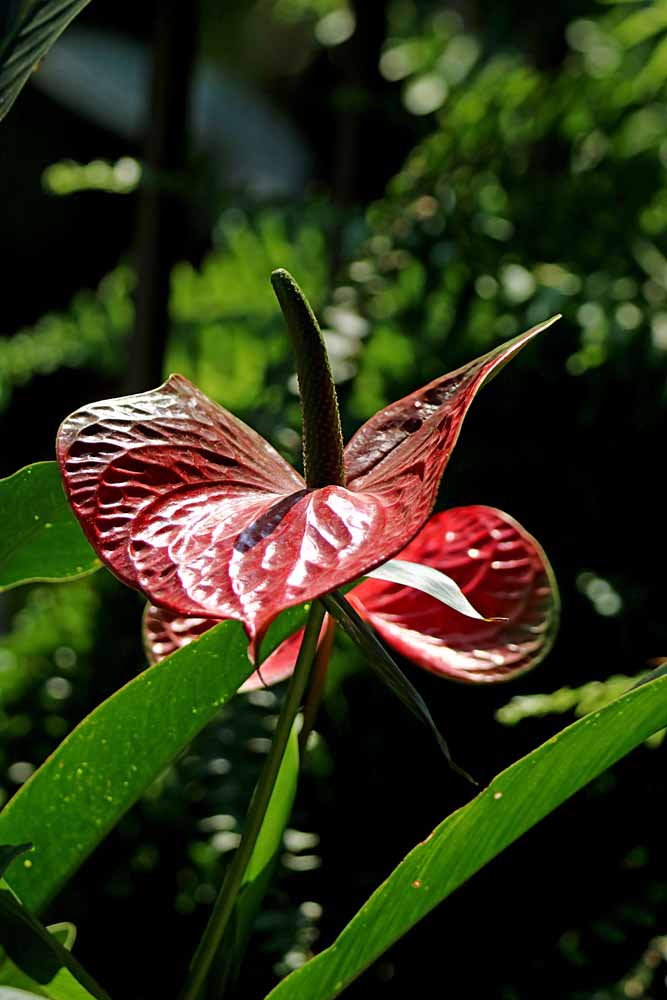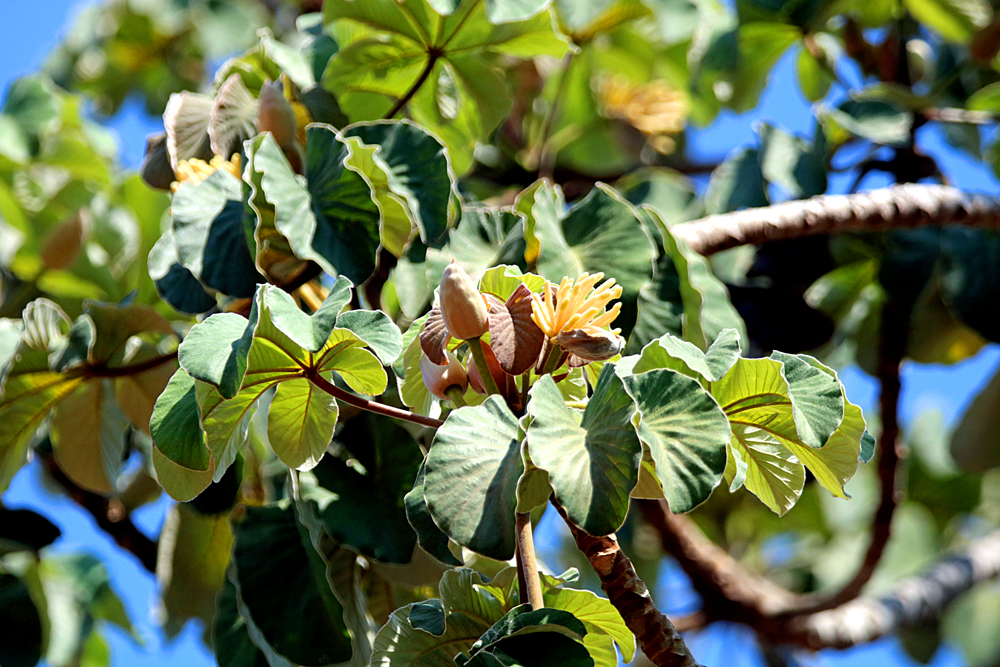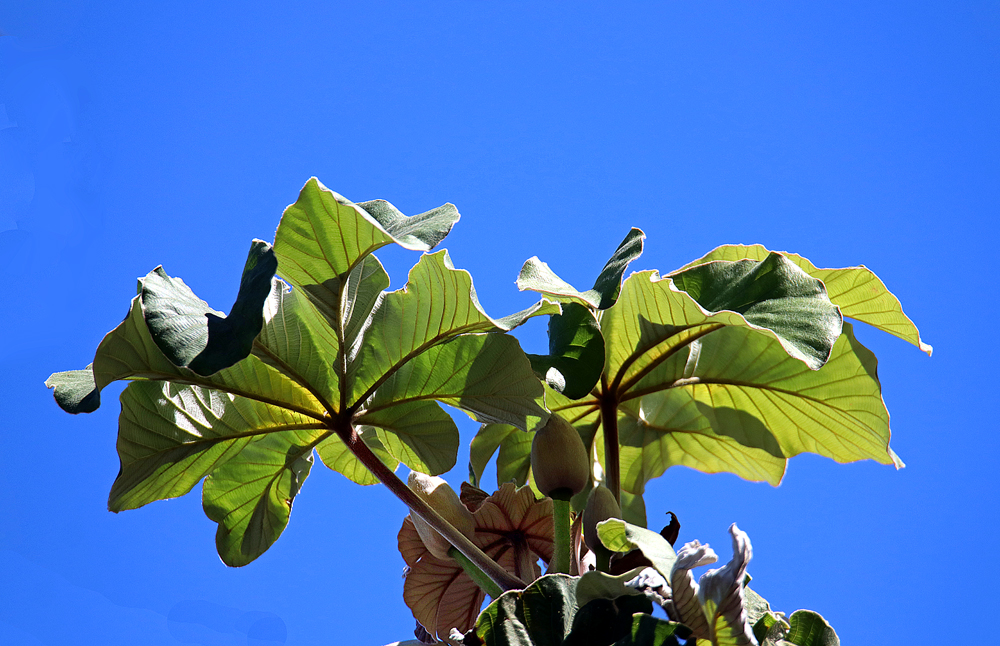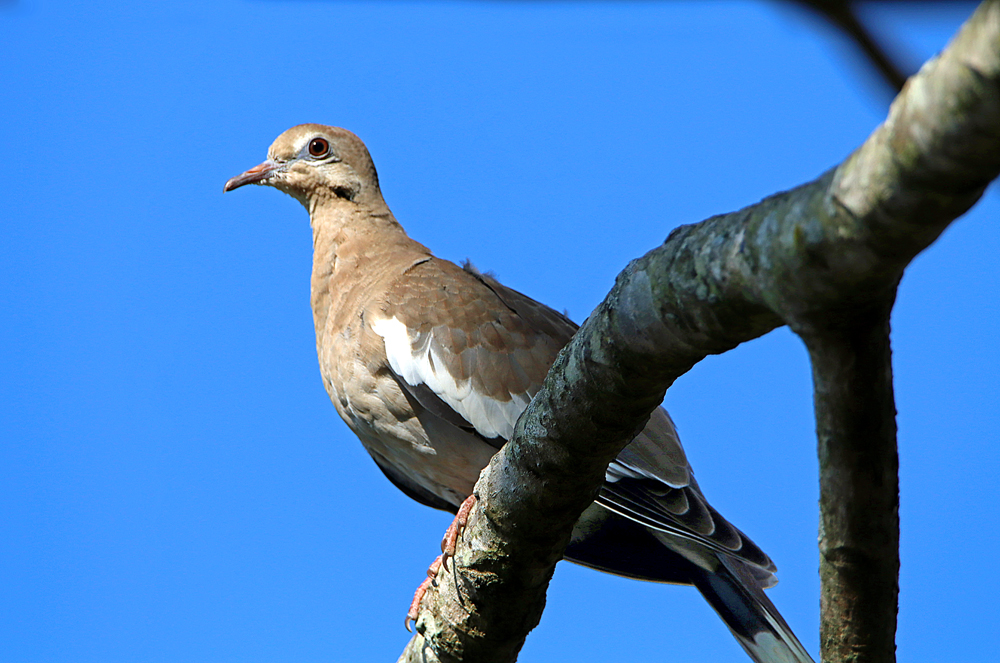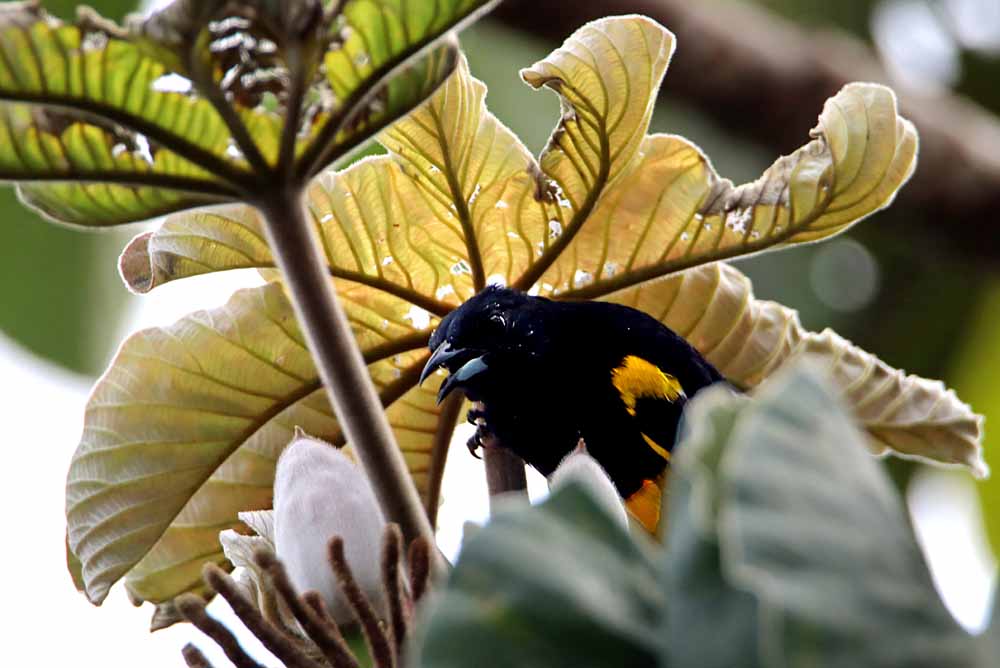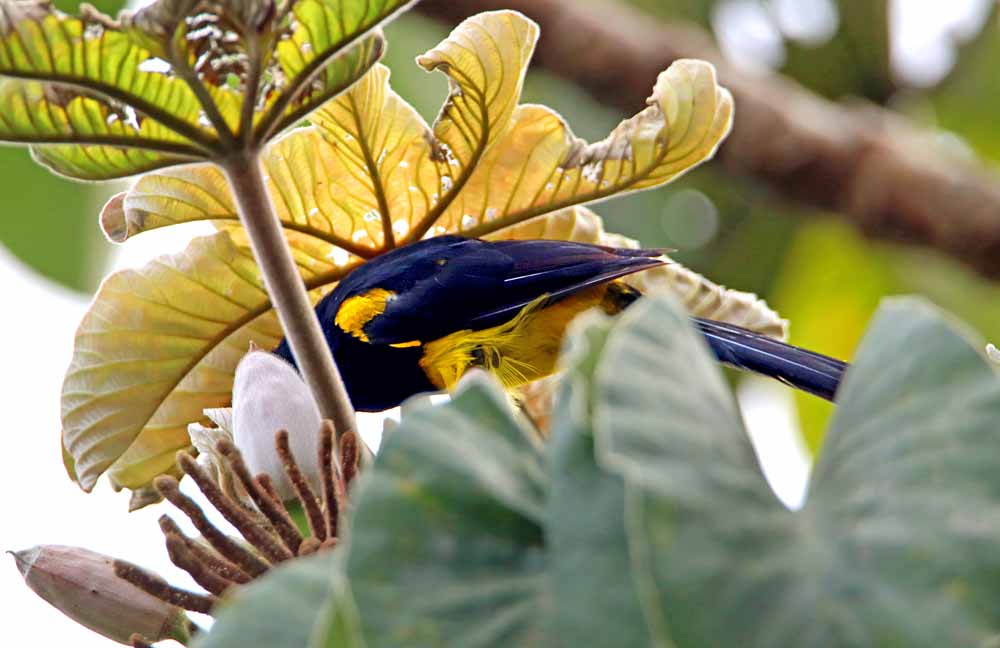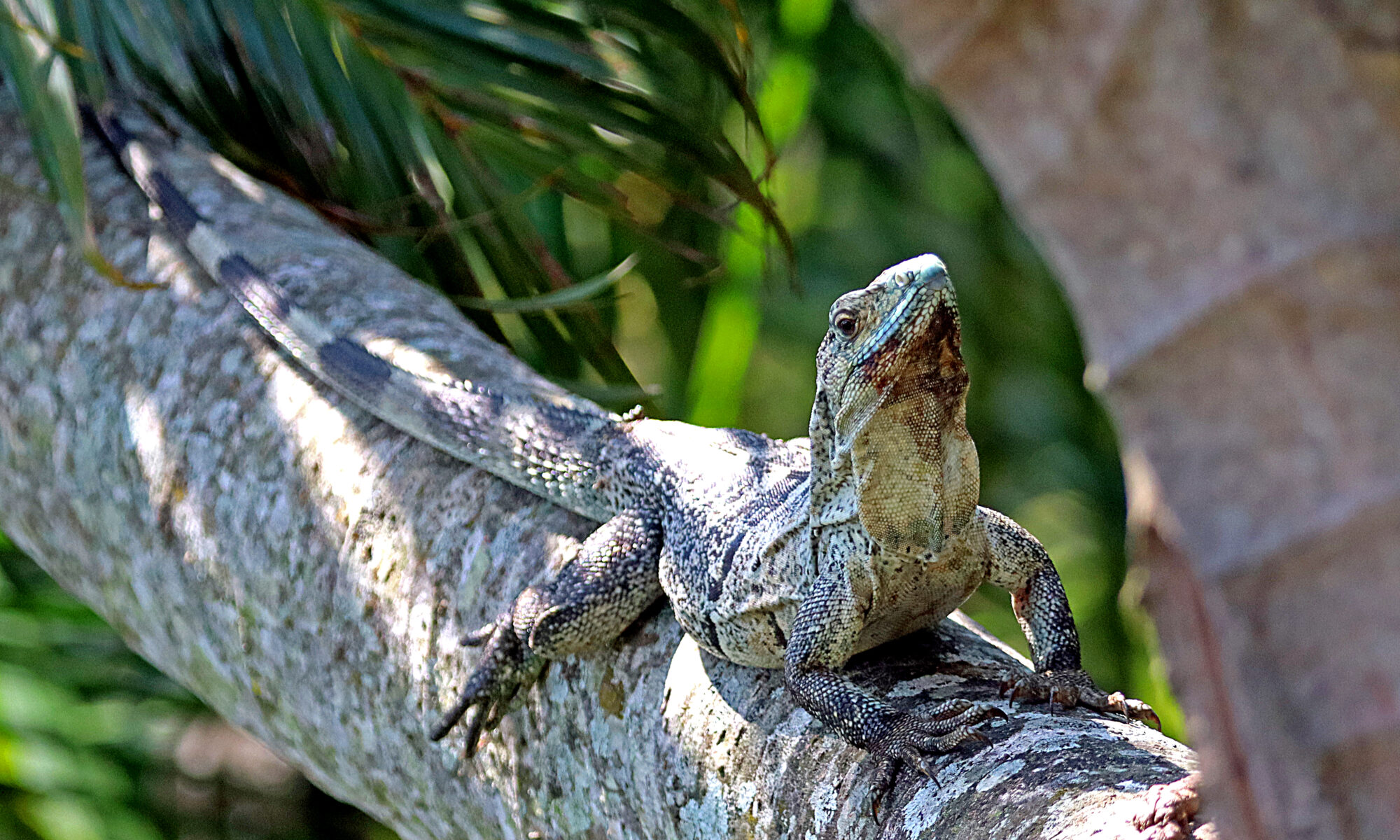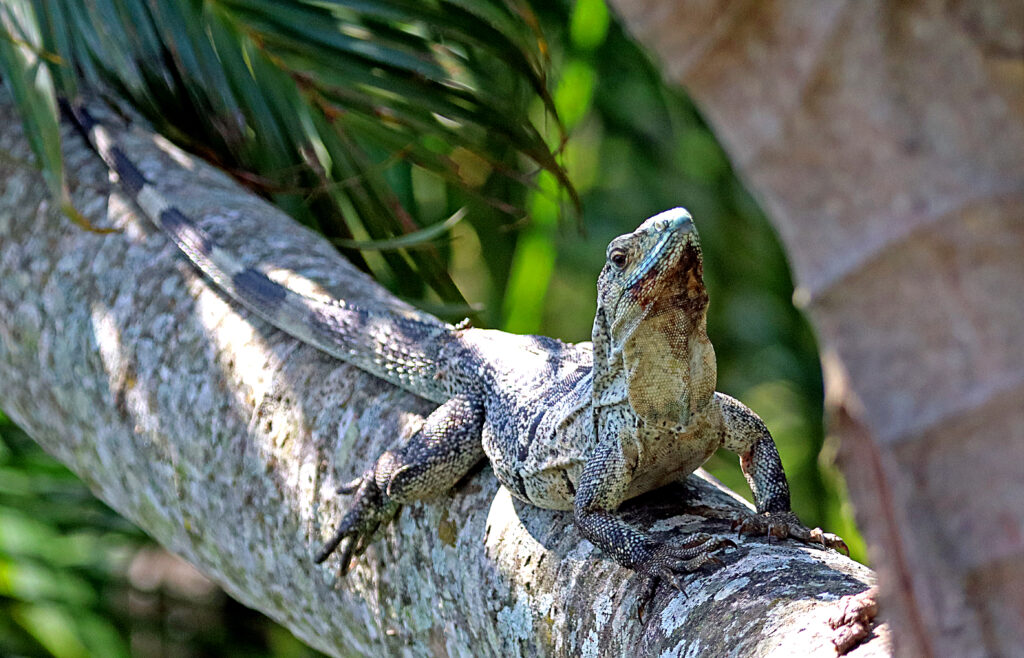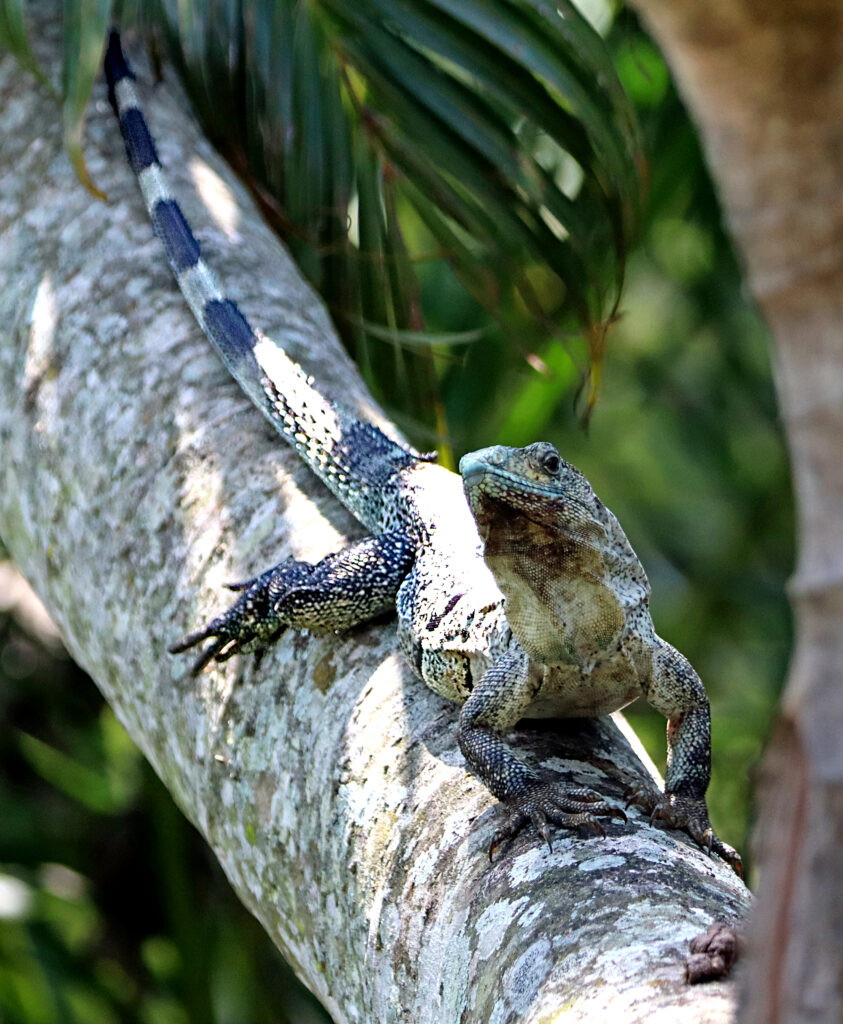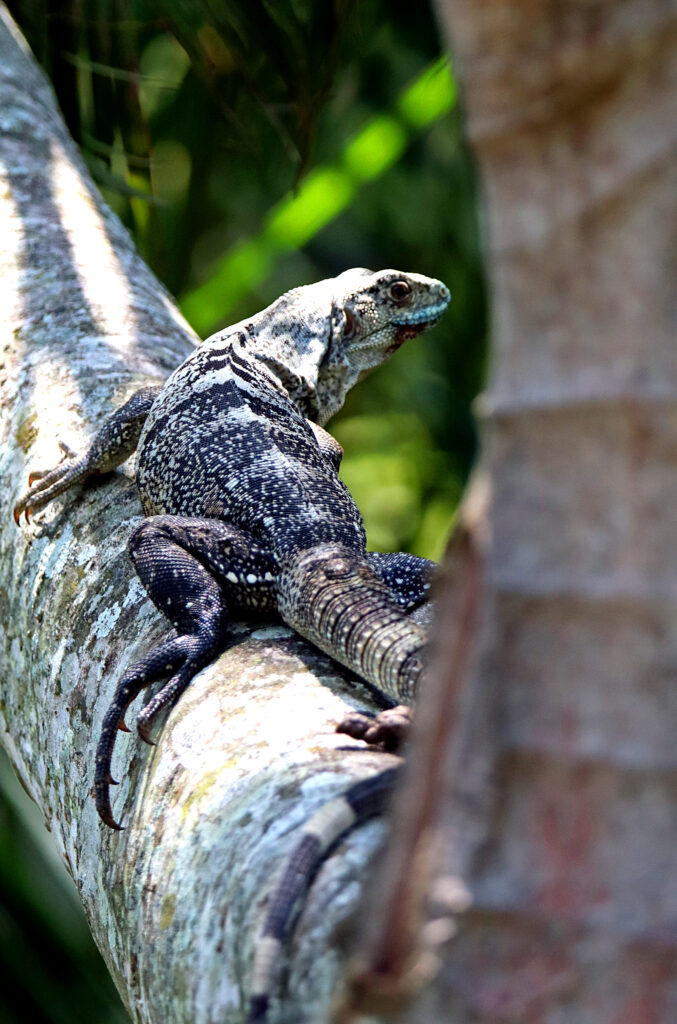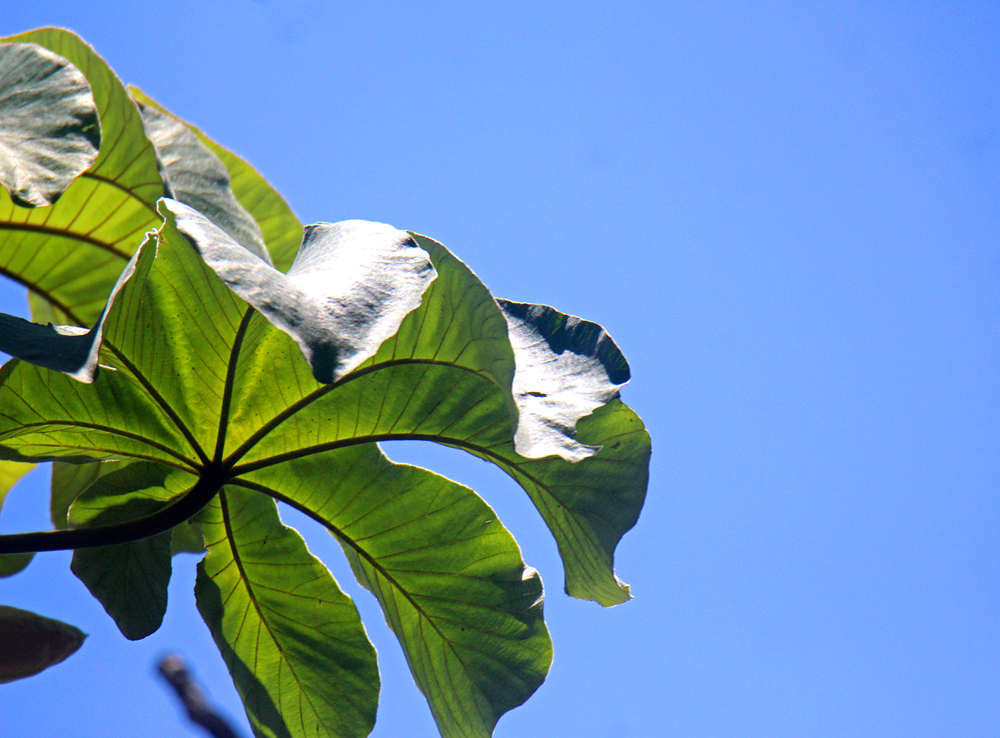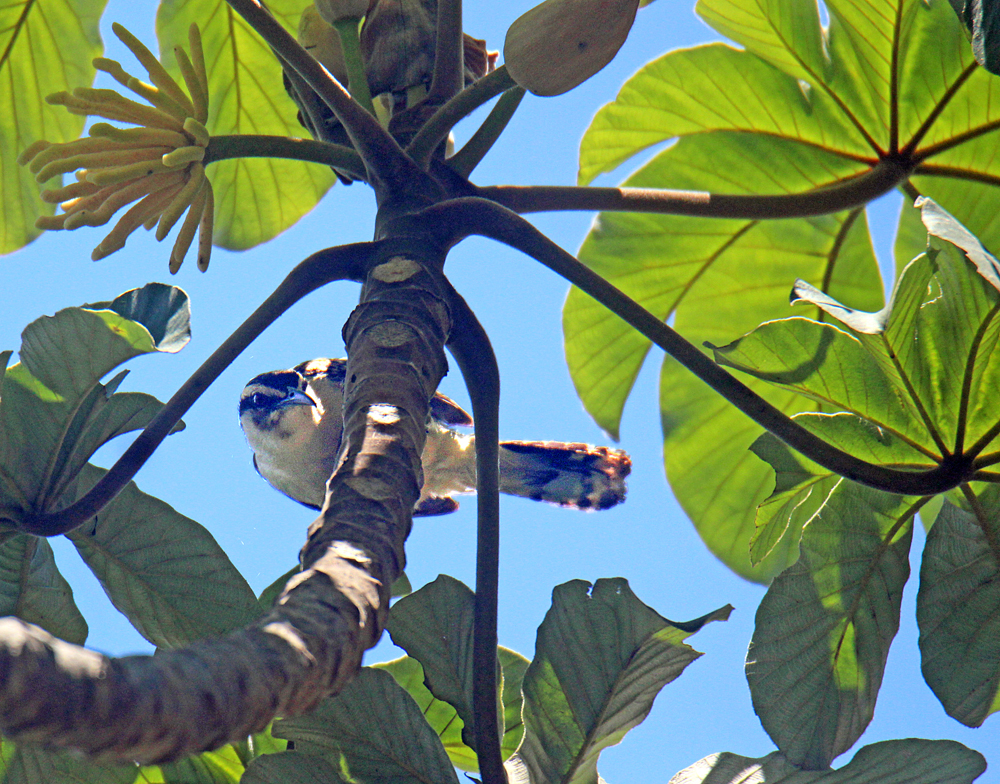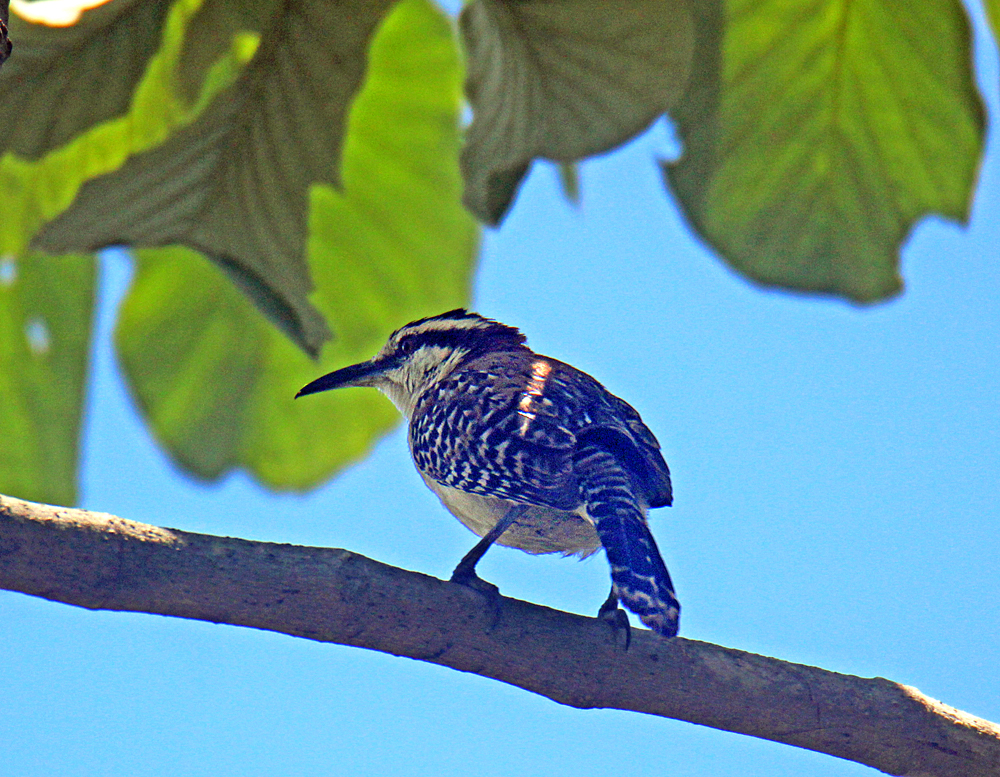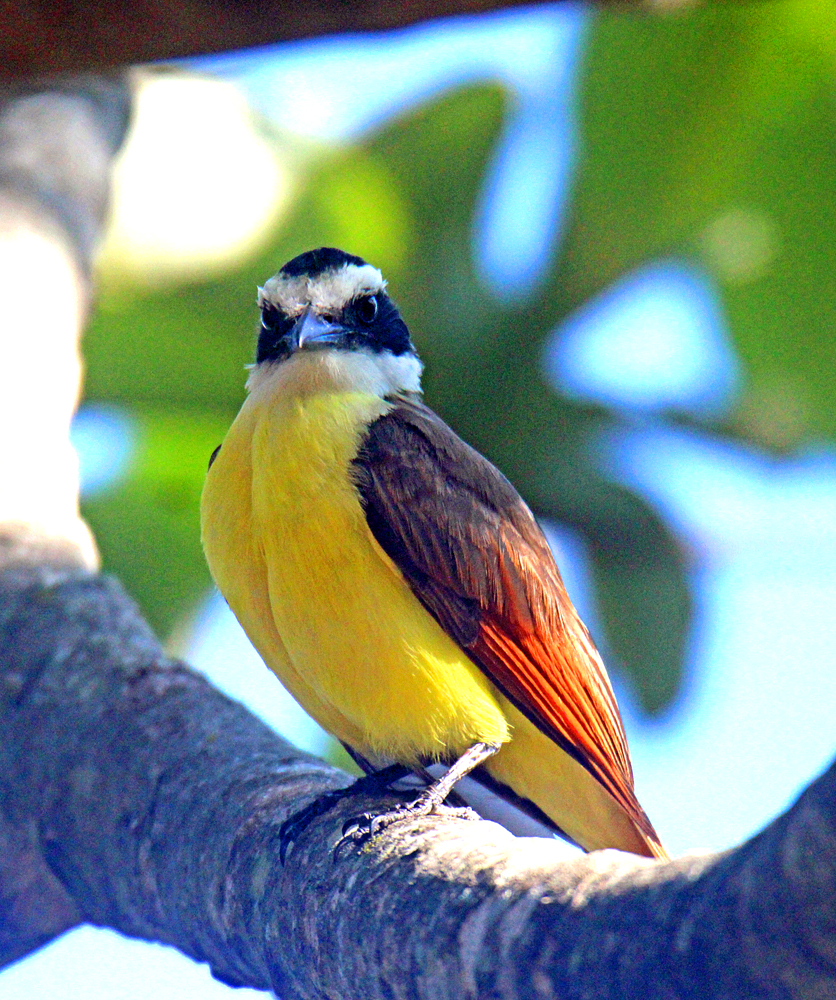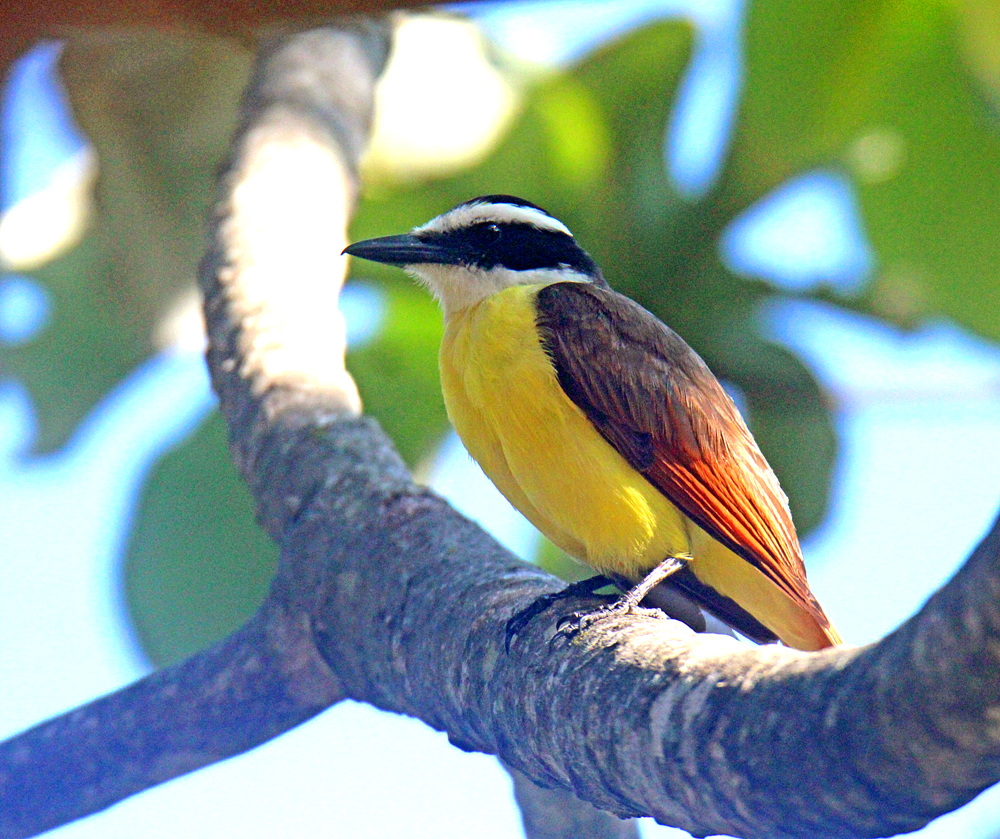I have recently been scanning the trunk and larger limbs of my Cecropia Tree and the big palm, looking for one of the several species of Crackers which almost always land on trees where they are well-disguised. And sure enough, yesterday morning one came to my Cecropia Tree – This one a Gray Cracker – Hamadryas februa (linked to my gallery). This is my second Gray Cracker with the other one seen at Hacienda Guachipelin, Rincón de la Vieja NP.
In my Brushfoots Galleries you will find that I have photographed 6 different species of Crackers, most at Xandari Resort in Alajuela, but two in my garden, one at Danta Corcovado Lodge and one in a reserve in Nicaragua.
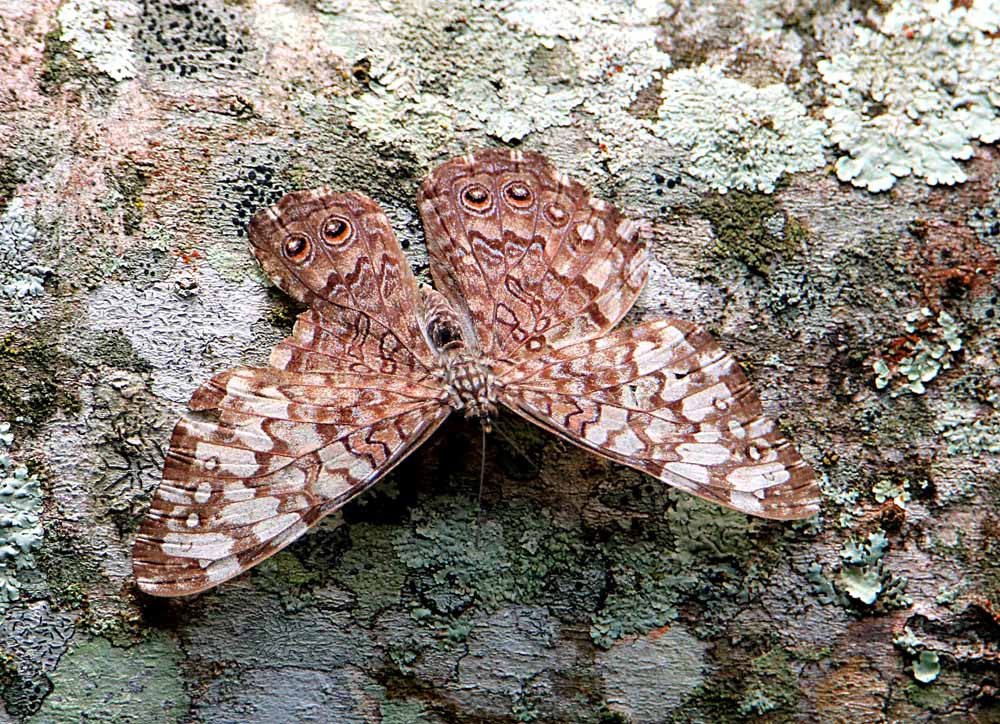
And yeah, I know, it is more brown than gray, but that is the way it is with several of these “official” names! 🙂 Though on butterfliesandmoths you can see that some or more gray. My six different species of CRACKERS in the above linked Brushfoots Galleries are . . .
- Red Cracker
- Gray Cracker
- Variable Cracker
- Orange Cracker
- Glaucous Cracker
- Guatemalan Cracker
¡Pura Vida!
About this Week’s Blog Posts
In the morning I’m flying to Limón Province for five nights at my best butterfly hotel, Hotel Banana Azul in Puerto Viejo de Talamanca where I walk the sandy beach road for a large variety of butterflies. I usually go in early or mid-September, so I’m hoping there are still a lot of butterflies there the first week of October! 🙂 STARTING TOMORROW, BLOG POSTS WILL BE DONE AT NIGHT for the next 6 days. All from Limón Province, Caribe Sur. I always include a visit to Gandoca Manzanillo Refugio and one to Cahuita NP, both of which are very good for both birds and butterflies! And sometimes other nature spots, but at 84 I’m slowing down and walking with a cane, so maybe not as much this time! 🙂
